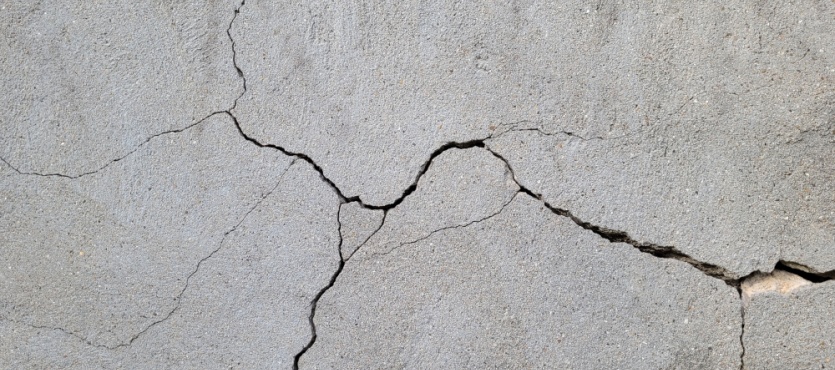Concrete is a fundamental building material known for its durability and strength. However, like all materials, it is subject to deterioration over time due to weather, aging, and other environmental factors. Regular maintenance and timely repairs are essential to extend the lifespan of concrete structures and prevent costly damage. In today’s blog, we’ll discuss the challenges of concrete deterioration, the importance of timely repairs, and common concrete repair techniques such as crack sealing, spall repair, and surface refinishing.
Challenges of Concrete Deterioration
Concrete deterioration can manifest in various ways, often caused by a combination of weather conditions, environmental factors, and aging. Here are some of the common challenges:
Weather-Related Damage
Canada’s diverse climate poses significant challenges for concrete structures. Freeze-thaw cycles, in particular, can be extremely damaging. Water penetrates the concrete surface, freezes, and expands, causing the concrete to crack and spall. Over time, repeated freeze-thaw cycles can lead to substantial deterioration.
Aging and Wear
Even the most well-constructed concrete will deteriorate over time. Exposure to harsh weather, chemicals, and regular wear and tear can weaken the concrete, leading to issues like cracking, spalling, and surface erosion. Without regular maintenance, aging concrete can become a significant liability.
Chemical Exposure
Concrete surfaces exposed to chemicals, such as deicing salts, can experience accelerated deterioration. These chemicals can penetrate the concrete, leading to corrosion of the embedded steel reinforcement and further weakening the structure.
Moisture Infiltration
Moisture infiltration is another common cause of concrete deterioration. When water penetrates concrete, it can lead to various problems, including freeze-thaw damage, corrosion of reinforcement, and the growth of mold and mildew.
The Importance of Timely Repairs
Addressing concrete issues promptly is crucial to prevent minor problems from escalating into major structural concerns. Timely repairs can:
Extend the Lifespan of the Structure: By addressing issues early, you can prolong the life of your concrete structures, ensuring they remain safe and functional for years to come.
Prevent Further Damage: Early intervention can prevent small cracks and surface damage from spreading and causing more significant problems.
Enhance Safety: Timely repairs help maintain the structural integrity of concrete surfaces, reducing the risk of accidents and ensuring the safety of the occupants.
Improve Aesthetics: Regular maintenance and repairs keep concrete surfaces looking their best, enhancing the overall appearance of your property.
Common Concrete Repair Techniques
Several techniques can be employed to repair and restore concrete structures. Here are some of the most effective methods:
Crack Sealing
Cracks in concrete can occur due to various factors, including thermal expansion, shrinkage, and structural loading. If left unattended, cracks can allow water and chemicals to penetrate the concrete, leading to further damage. Crack sealing involves filling the cracks with a suitable sealant to prevent moisture infiltration and further deterioration. The process typically includes:
- Cleaning the Crack: Removing any debris, dirt, or loose material from the crack to ensure proper adhesion of the sealant.
- Applying the Sealant: Using a high-quality sealant to fill the crack, providing a watertight barrier.
- Smoothing the Surface: Ensuring the sealant is evenly applied and smooth to blend with the surrounding concrete surface.
Spall Repair
Spalling occurs when the surface layer of concrete breaks away, exposing the underlying material. This can be caused by freeze-thaw cycles, corrosion of embedded steel, or impact damage. Spall repair involves removing the damaged concrete and applying a repair mortar to restore the surface. The steps include:
- Removing Damaged Concrete: Chiseling out the spalled concrete to reach sound material.
- Cleaning the Area: Ensuring the repair area is clean and free of debris.
- Applying Repair Mortar: Using a high-quality repair mortar to fill the void and restore the surface.
- Finishing: Smoothing and finishing the repair area to match the surrounding concrete.
Surface Refinishing
Surface refinishing involves applying a new layer of material to the existing concrete surface to restore its appearance and protect it from further damage. This technique is particularly useful for addressing widespread surface deterioration. The process includes:
- Cleaning the Surface: Removing any dirt, debris, and loose material from the concrete surface.
- Repairing Minor Defects: Addressing any small cracks or spalls before applying the new surface layer.
- Applying the Refinishing Material: Using a resurfacing compound or overlay to restore the surface, providing a fresh, uniform appearance.
- Sealing: Applying a protective sealant to enhance durability and protect against moisture and chemicals.
Takeaways:
Concrete repairs are essential for maintaining the longevity and structural integrity of your property. By addressing common issues such as cracks, spalling, and surface deterioration promptly, you can extend the lifespan of your concrete structures and prevent costly damage. Turnbull Masonry offers expert concrete repair services, employing techniques like crack sealing, spall repair, and surface refinishing to restore and protect your concrete surfaces. Don’t wait for minor issues to become major problems—invest in the longevity of your property with professional concrete repairs today. Contact Turnbull Masonry to learn how we can help you maintain the beauty and durability of your concrete structures.

